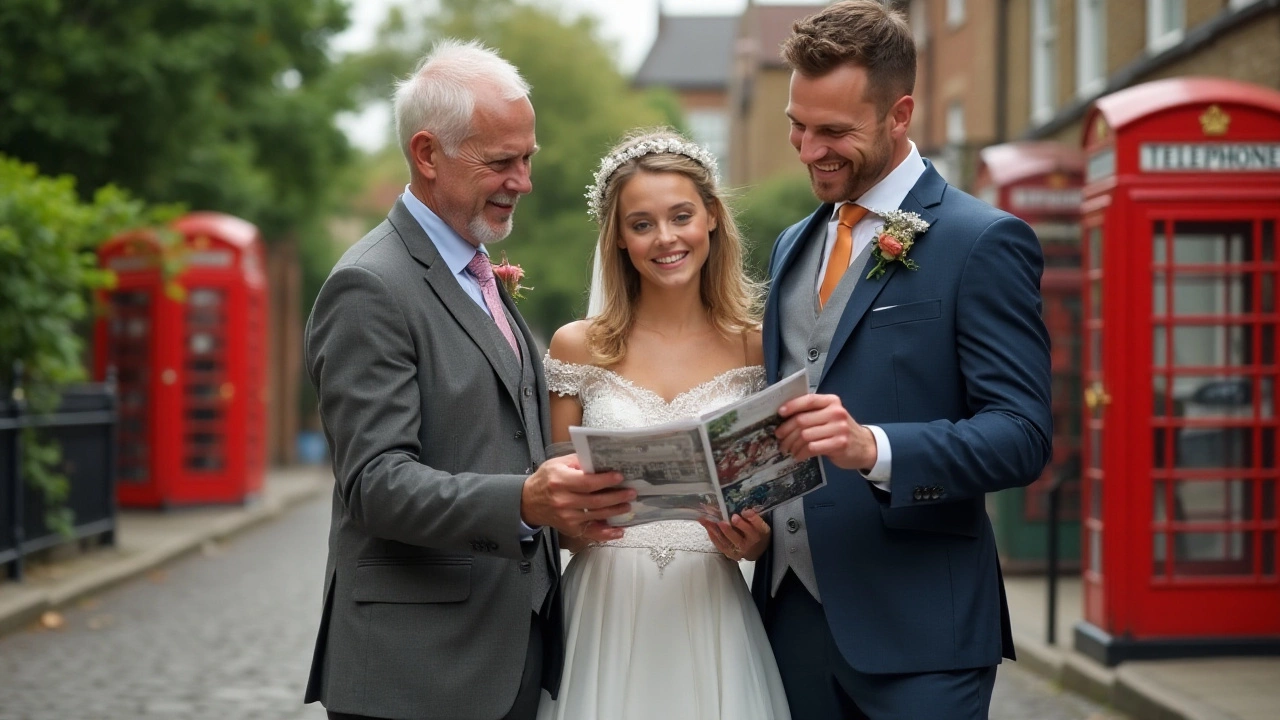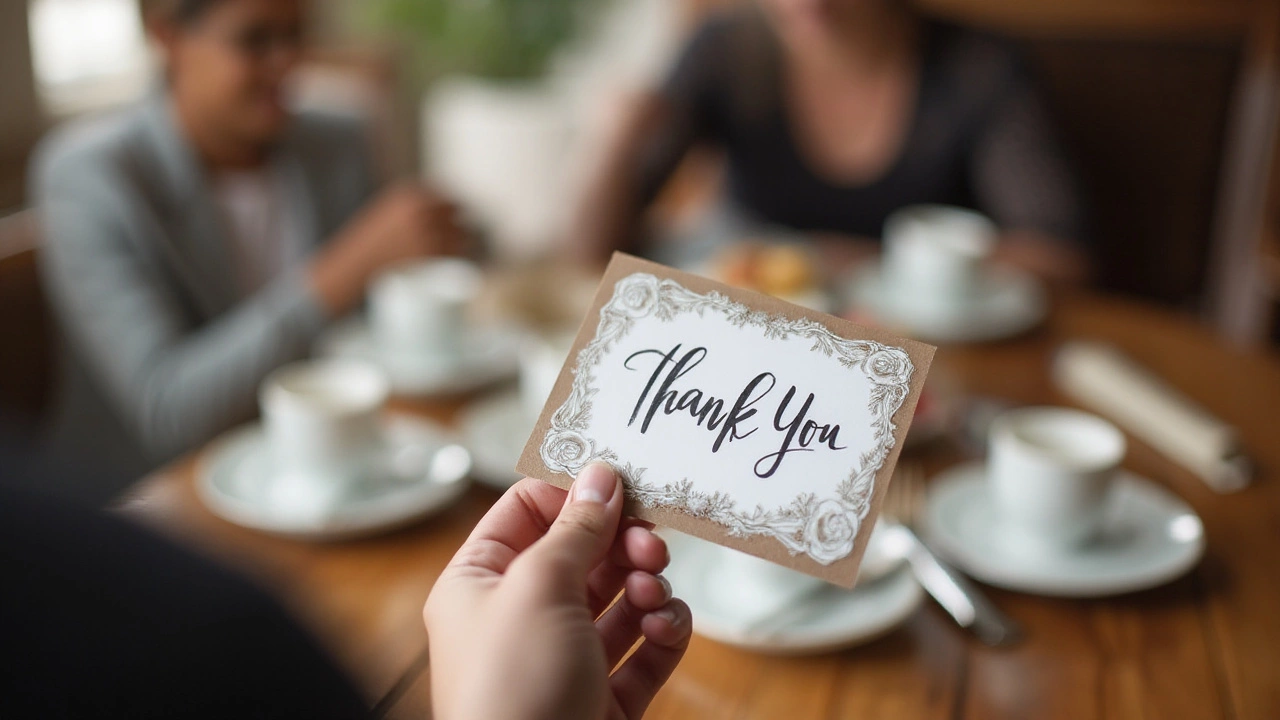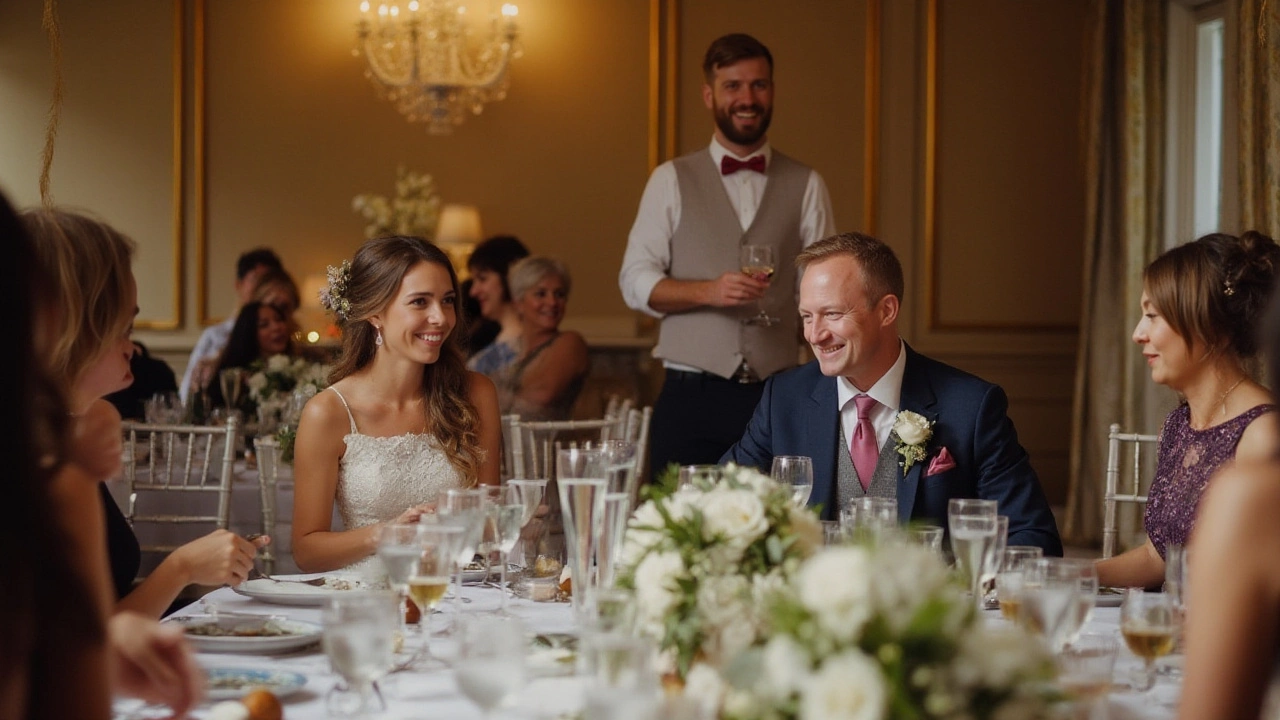Weddings are a symphony of cherished moments, and capturing every smile, tear, and glance is a wedding photographer's mission. But when the party's over and it's time to settle the bill, the question of how much to tip the person behind the lens often looms unexpectedly.
Photographers, integral to the celebration, have crafted narratives through images, yet many couples struggle with tipping etiquette. Is a $50 tip a generous and fair acknowledgment of their work? This article unravels the nuances of tipping in the wedding industry and offers guidance on navigating this token of appreciation.
- Understanding the Wedding Photography Industry
- Tipping Etiquette in Weddings
- Factors Influencing Tip Amounts
- Alternatives to Tipping
- Impact of Geography and Services
- Practical Tips for Showing Gratitude
Understanding the Wedding Photography Industry
The wedding photography industry thrives on its ability to transform fleeting moments into lasting memories, a crucial element on the grand timeline of any couple’s journey. This sector of photography is not only an art but a demanding profession that requires a substantial blend of technical expertise, creativity, and interpersonal skills. From high-end cameras and lenses to years of experience capturing various lighting and emotions, wedding photographers invest profoundly in their craft to offer services that stand out. Wedding photographer tips often surface when discussing service satisfaction, yet it’s essential to appreciate the layers behind the lens. Photographers are tasked with not only managing unpredictable environments but also guiding clients through natural poses without intruding on the intimacy of their special day.
Photographers in this niche often work for days on single projects — from initial client meetings, planning sessions, and scouting locations, to post-wedding editing processes that might exceed the actual shooting time. This unseen labor justifies their fees and sometimes, the expected tipping wedding photographer norm. While $50 might seem adequate in different contexts, professional wedding photographers face varied expenses, including costly gear maintenance, editing software subscriptions, and sometimes, the hire of additional skilled personnel. According to Photography Life, "Wedding photographers dedicate as much time to editing as they do to taking photos." This investment transforms raw captured moments into polished, emotion-filled collections.
Another component of this industry involves embracing the technological side — understanding the latest in imaging technology, social media strategies, and product delivery efficiency. Innovations continue to reshape how photographers engage with both the artistic and business aspects of their profession. The rise in competition also means photographers must constantly refine their style and offer extra services like photo albums, online galleries, and even short video highlights.
Finally, consider that each event captured is unique. This requires a great degree of adaptability from the photographers, adjusting to different cultural backgrounds, preferences, and expectations. Whether they're hired to document a modest backyard ceremony or an opulent ballroom affair, the best in the field can seamlessly navigate diverse encounters to produce images that naturally resonate with authenticity and affection. Hence, the industry calls for understanding and appreciation beyond the visible photos, seeing value in the extensive dedication involved.
Tipping Etiquette in Weddings
Understanding the nuances of tipping at weddings can feel overwhelming in the midst of planning, yet it's an integral part of expressing gratitude for the services offered. Wedding etiquette, while evolving, holds that tipping is a time-honored tradition extending beyond mere compensation. It's a way to thank your vendors, particularly your wedding photographer, whose work will immortalize your big day.
Traditionally, tipping amounts vary depending on the service. While tipping is not mandatory, it is always appreciated if the photographer exceeds expectations and captures surprising or especially candid moments. A common guideline is to tip 5-10% of the photographer's fee. This percentage can serve as a starting point. Thus, if your photographer's services cost $2,000, a $100 to $200 tip reflects appreciation without being extravagant.
For many, a wedding photographer offers more than just technical skill; they provide a sense of calm and creativity, transforming moments into memories. Some professionals working within larger companies may pool tips with their assistants or staff, which could influence your tipping decision. It’s always advisable to check if their service includes gratuity to avoid any awkward situations.
"The best things in weddings aren't things—it's the photos that bring all the day’s emotions back," shares Emily Roberts, editor at Wedding Trends Magazine. "A thoughtful tip is a testament to the enduring impact a photographer can have on a couple's life."
The timing of a tip is another consideration. Typically, the tip will be handed over at the end of the reception or once the services have been delivered. Some couples opt to include a personal note along with the tip, expressing personal gratitude either at the handover or in a heartfelt postcard after receiving their final photo album.
As the wedding industry grows more inclusive, tipping etiquette can also vary based on your cultural background and personal beliefs. While a $50 tip might seem sufficient, consider the level of service, the geographical norms, and the intricacies involved in capturing your wedding magic before deciding. To enhance the depth of gratitude, you might explore alternatives like public reviews or social media shoutouts for ongoing appreciation.

Factors Influencing Tip Amounts
When contemplating how much to tip a wedding photographer, a range of variables plays a significant role in determining the final sum. One of the primary factors is the scope and length of services rendered. Typically, a photographer who has diligently documented the entire day, from the bride's meticulous preparation to the late-night dance floor escapades, has contributed countless hours beyond the immediate ceremony. The magnitude of the wedding itself often mirrors their efforts. Larger weddings generally demand more intricate photography logistics, thus possibly warranting a higher tip.
The photographer's experience and reputation can also sway tipping practices considerably. Highly sought-after photographers, known for their unique eye and storytelling capabilities through images, often charge premium rates. For clients who appreciate artistry and recognize the investment in hiring a top-tier professional, tipping may reflect gratitude for rare craftsmanship. In contrast, emerging photographers might be grateful for any token, as each gesture helps fuel their growing portfolios and careers.
"Photography is the art of frozen time... the ability to store emotion and feelings within a frame," noted celebrated photographer Meshack Otieno.Location too bears influence on tipping customs. Cultural norms vary widely across regions, affecting what is deemed an acceptable tip. In metropolitan areas where the cost of living is notably higher, larger tips might be expected simply to align with prevailing financial sensibilities. Conversely, in smaller towns, a $50 tip could be perceived as particularly generous.
Customized photography packages are another variable. If a couple chooses a standard package and elects additional services such as bespoke albums or engagement shoots, this customization may impact tipping habits. The personal connection established between the couple and the photographer during the planning or engagement sessions also matters; a positive bond can lead to higher tips as a reflection of the personal and professional relationship.
Ultimately, the quality of service received throughout the planning stages and on the actual wedding day can make or break a couple's decision. Photographers who provide exceptional customer service, showing professionalism and enthusiasm, tend to inspire more generous tipping. Couples often express additional appreciation for those photographers who managed to alleviate wedding day stresses or captured unforeseen moments of joy, cementing their irreplaceable role in the celebration.
Alternatives to Tipping
The tradition of tipping professionals like wedding photographers is not universal, and cultural differences can play a big role. Sometimes, extra appreciation for a photographer's effort can be expressed in ways other than financial tips, a remarkable alternative for couples working within a budget after their big day. Think about it this way: capturing moments of joy and intimacy at a wedding is as much an emotional investment as it is a professional one. Beyond financial compensation, photographers, much like other artists, thrive on acknowledgment and appreciation.
One alternative to tipping is the power of word-of-mouth advertising. By recommending your wedding photographer to friends, family, and colleagues, you're helping them expand their client base, a gesture that can often be more valuable over the long term compared to a one-time tip. Consider writing rave reviews online—whether it's on social media, wedding forums, or business listing websites, a well-worded testimonial can be instrumental in generating new business. According to a recent survey by the American Wedding Group, 92% of couples stated they relied heavily on online reviews when selecting their vendors.
A heartfelt thank you note with a small token of gratitude can leave a lasting impression. In an interview with The Knot, renowned photographer Jasmine Star shared, "The most memorable rewards are genuine words in a card that I can read over and over—proof that I've made a difference."
Another thoughtful way to show appreciation without tipping is to offer a sincere, written endorsement. A personalized thank you card expressing your gratitude for their attention to detail, creativity, and the unique moments they captured can be incredibly meaningful. Some couples also choose to send a small, personal gift such as a customized photo album or photo frame. These tokens can often be priceless compared to the practice of tipping.
For the digitally savvy, creating a highlight post or video showcasing the photographer's work can serve as a substantial boost to their portfolio. Tagging the photographer's social media account in your posts or stories allows their work to reach a wider audience and demonstrates your appreciation in a modern way. According to a 2023 report by the Pew Research Center, 72% of surveyed photographers said that social media exposure significantly impacts their business expansion.
In the realm of alternative gratitude, organizing a small post-event meet-up or dinner can foster a personal connection and in doing so, demonstrate appreciation for their artistic contributions. Inviting a photographer to share a simple meal or gathering with friends allows them to witness their work's impact firsthand in a relaxed setting. While unconventional, gestures like these highlight the respect for their dedication and the wish to continue relationships beyond mere transactions, adding human value to the professional interaction.

Impact of Geography and Services
When it comes to the delicate question of tipping your wedding photographer, few considerations weigh as heavily as geography and the gamut of services rendered. The location of your wedding can significantly influence not only the tip amount but also the expectations surrounding it. In metropolitan areas, where the cost of living is higher, photographers typically charge steeper fees, and thus, tipping practices might shift accordingly. For example, in bustling cities like New York or San Francisco, a tip might be seen less as a bonus but more as an integral part of the photography fee. Contrast this with a more serene rural setting, where the notion of a tip might be met with surprise rather than expectation, reflecting the slower economic pace.
But what about the services themselves – how do these factor in? A photographer who merely captures the ceremony might be tipped differently compared to one offering comprehensive packages that include engagement shoots, bespoke photo albums, and even post-wedding editing sessions. Each service layer adds to the complexity and labor intensity of the photographer's role. In such cases, offering a higher tip can be seen as an acknowledgment of their expansive service and dedication. Kim Knox Beckius, an expert in wedding trends, succinctly puts it:
"In areas where photographers offer premium packaged services, tipping generously can be the couple's way of saying, ‘Thank you for going the extra mile.’"
The intersection of geography and services can also lead to surprising statistical trends. According to a 2023 study by the Wedding Report, approximately 60% of couples in urban locales preferred to tip, compared to only 30% in rural areas. This points to an interesting dynamic where expectations and customs can dramatically adjust based on where you tie the knot and the scope of work provided by the photographer. When planning your wedding, take a moment to appraise these factors thoughtfully. Not only does it help in setting a budget, but it ensures the gesture of appreciation – whether $50 or another amount – resonates appropriately with the professional capturing your special day.
Practical Tips for Showing Gratitude
When it comes to acknowledging the efforts of your wedding photographer, many avenues exist beyond the conventional cash tip. While tipping in the context of weddings is deeply entrenched in tradition, not every gesture of gratitude has to be monetary. Indeed, in today's multifaceted photography industry, tipping wedding photographer professionals can be as varied as the wedding themes themselves. One of the simplest yet profoundly appreciated ways to show gratitude is to share your positive experiences on social media platforms or online review sites. Photographers thrive on word-of-mouth and digital testimonials, which are instrumental in growing their client base.
Consider this approach: crafting a detailed and heartfelt review that highlights specific moments and unique aspects of their service. Mentioning snippets about how they managed to capture the essence of your day, their professionalism, and perhaps any challenges they seamlessly handled, can go a long way in reciprocating their hard work. In a market where reputation is everything, a well-written review can sometimes hold more value than money. According to a survey by BrightLocal, 87% of consumers read online reviews for local businesses in 2020, and this number has only grown.
Another effective gesture is involving the wedding photographer tips in sharing the final product. Once you have received the album, consider recommending your photographer to any friends or family members who are planning a wedding. Encouraging them to reach out can expand their clientele and build enduring partnerships. It could be as simple as mentioning during a casual conversation or more structured like posting congratulatory messages online with a tag to your photographer's profile.
Additionally, personalization can elevate your gratitude expressions. Sending a handwritten thank-you note is a personal and thoughtful gesture that resonates deeply. Pair this with a small, meaningful gift—a book of photography they admire or a voucher to a local café or independent bookstore they frequent can leave a lasting impression. Such gestures demonstrate that you value their artistry and that you've taken the time to know their interests and preferences.
"A sincere gesture speaks more vividly than words. Showing deep appreciation in personal ways resonates beyond the monetary," muses renowned photographer Jane Goodall.
For those who prefer structured approaches, establishing a referral relationship could greatly benefit your photographer. This involves formally offering to include their business cards in your wedding invitation suites or popular wedding blogs if you maintain one. By doing so, you're not only helping them gain future clients but also integrating them into the fabric of your wedding narrative.
Lastly, consider sharing the spotlight with them during anniversary celebrations. Invite them to your future events as a guest, celebrating birthdays or anniversaries, which could lead to continued opportunities for collaboration. Simply keeping the connection alive post-event can be one of the sincerest forms of gratitude. With these wedding tips, you're bound to leave a positive lasting impression, fostering a relationship built on mutual respect and admiration.

